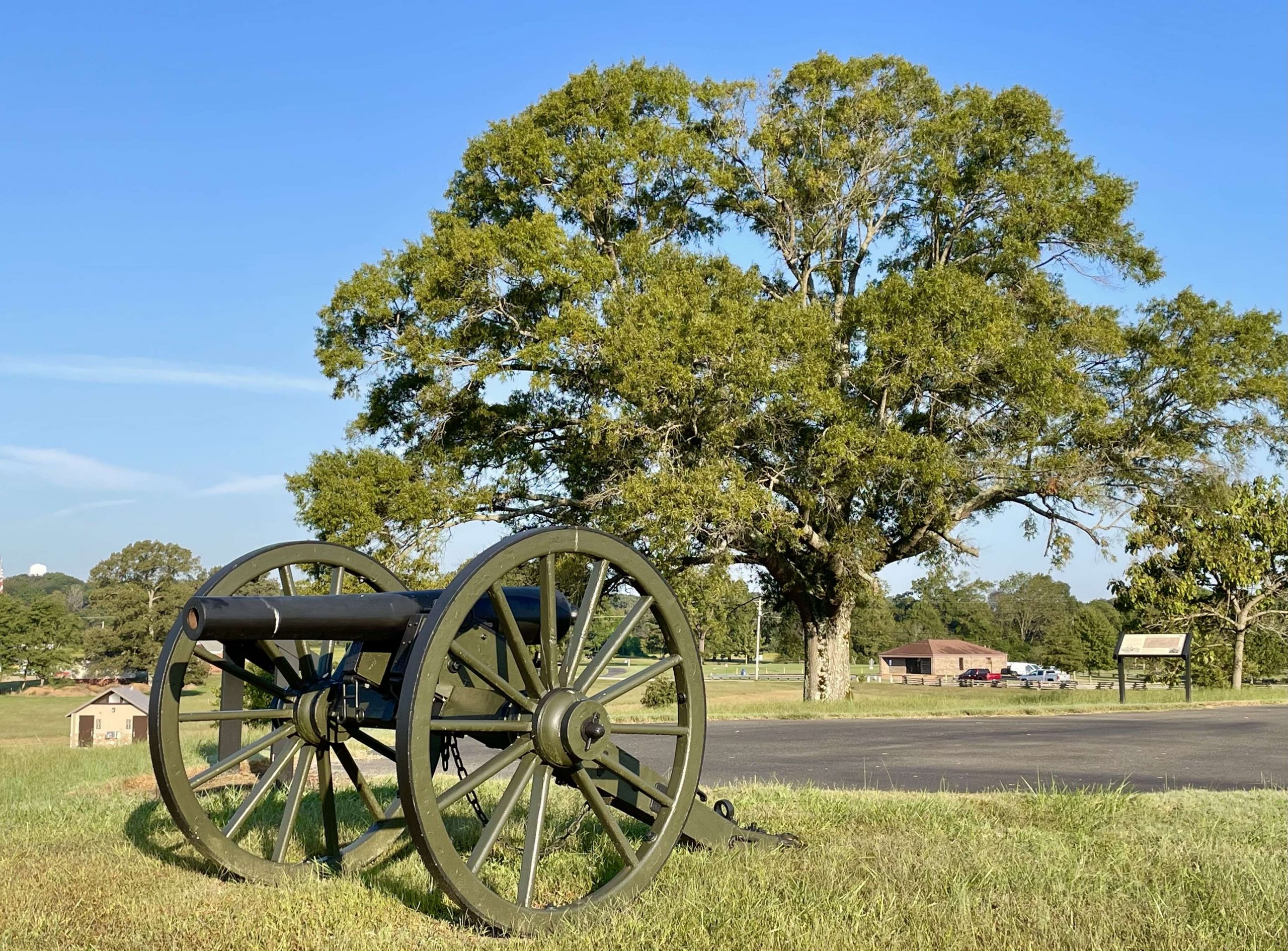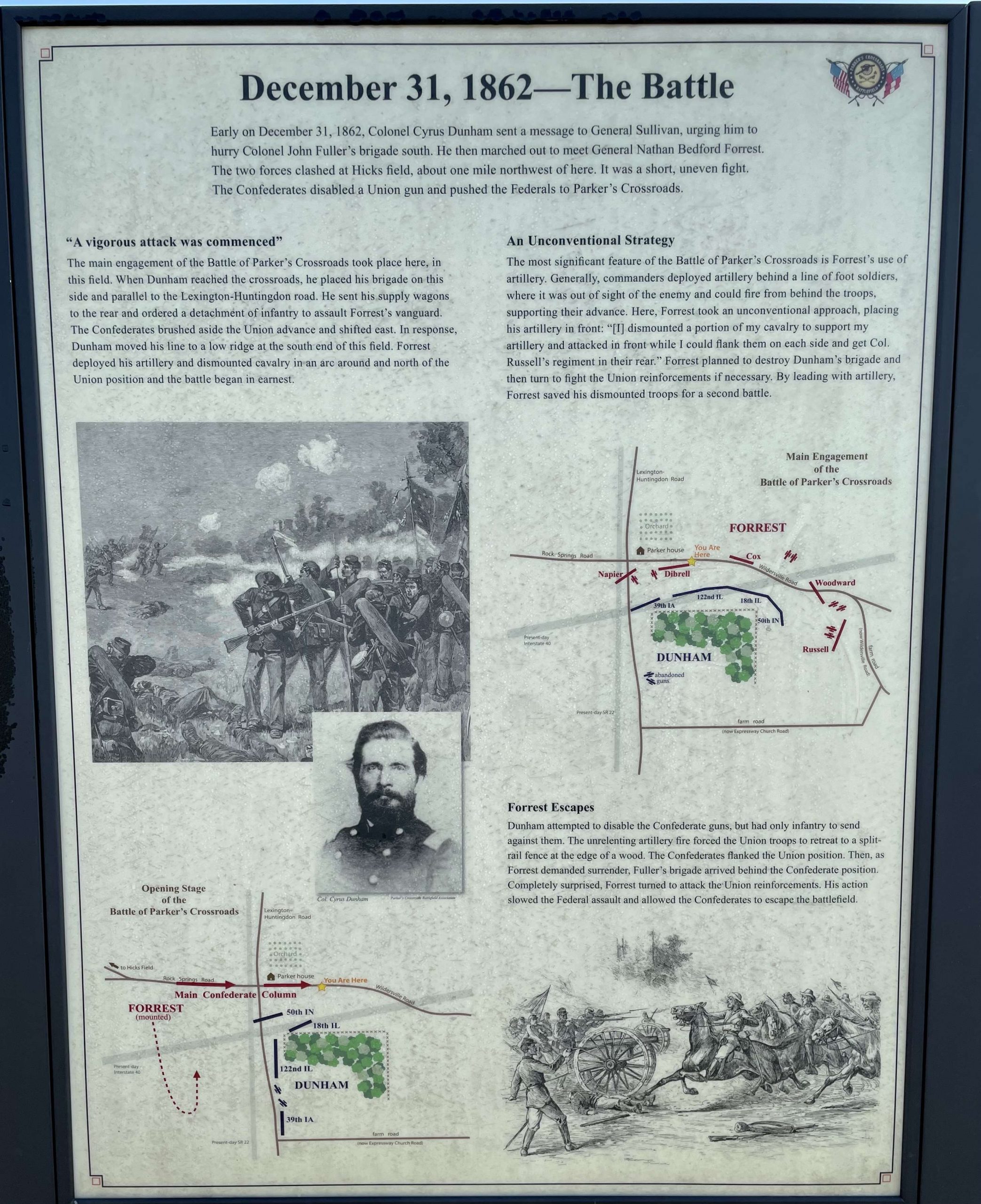
When Saturday’s weigh-in concludes, one of the 63 teams competing on Carroll County 1000 Acre Recreational Lake will make history by winning the Mossy Oak Fishing Bassmaster Junior National Championship. Notably, these young anglers are fighting for this honor just 15 miles north of a famous Civil War site — the Battle of Parker’s Crossroads.
No one’s comparing war and fishing, but history records a particularly fierce commitment to success that parallels the tenacity required to win championship tournaments.
Setting the scene
Marking the location of the engagement that took place Dec. 31, 1862, the Parker’s Crossroads site comprises multiple areas clustered around the intersection of Interstate 40 and Tennessee Highway 22 (exit 108). With a driving tour, walking trails and a city park, the site presents historic markers, artillery pieces, burial sites and restored structures, including the split-rail fence that proved significant to the battle.
The Battle of Parker’s Crossroads transpired as a result of Union General Jeremiah C. Sullivan’s effort to capture Confederate General Nathan B. Forrest. In an effort to impede General Ulysses S. Grant and General William T. Sherman’s planned attack on Vicksburg, Miss., Forrest and his 1,800-man cavalry brigade had been destroying bridges, trestles and rails to disrupt Grant’s communications in West Tennessee.
After an impactful two-week mission, Forrest was headed east toward the Tennessee River, when he stopped (Dec. 29-30) to rest about five miles north of the crossroads. Seeing his opportunity, Sullivan sent his troops from Jackson, Miss., while ordering Col. John W. Fuller’s Ohio Brigade and Col. Cyrus Dunham’s brigade south to capture Forrest.
The battle
When Forrest set out the morning of Dec. 31, he was unaware that two Union brigades were moving against him. While Forrest headed south along the McLemoresville Road, Dunham’s men formed a battle line at Hick’s Field, a mile north of the crossroads.
When the opposing forces met, Forrest’s artillery and dismounted cavalry forced Dunham’s men to retreat to the house of Rev. John Parker, then a second time to a split-rail fence south of the crossroads. With the Union force pinned down, Forrest sent demands for surrender to Dunham. But just as it appeared the battle was over, Fuller’s Ohio Brigade arrived from the north and captured 300 Confederate horse-holders.
Now here’s where we bring the story into relevance to this week’s tournament: Facing a dire situation, essentially caught between two enemy brigades, Forrest could have raised the white flag. Instead, he gave a decisive order: “Charge them both ways!”
Mounting a bold counterattack, Forrest disrupted the Union forces long enough to slip away and reach the Tennessee River ferry crossing.
That’s the kind of relentless, never-surrender mentality that will guide one of these teams to victory.
For information on this historic site, its reenactment schedules and living history events, visit www.parkerscrossroads.org.






